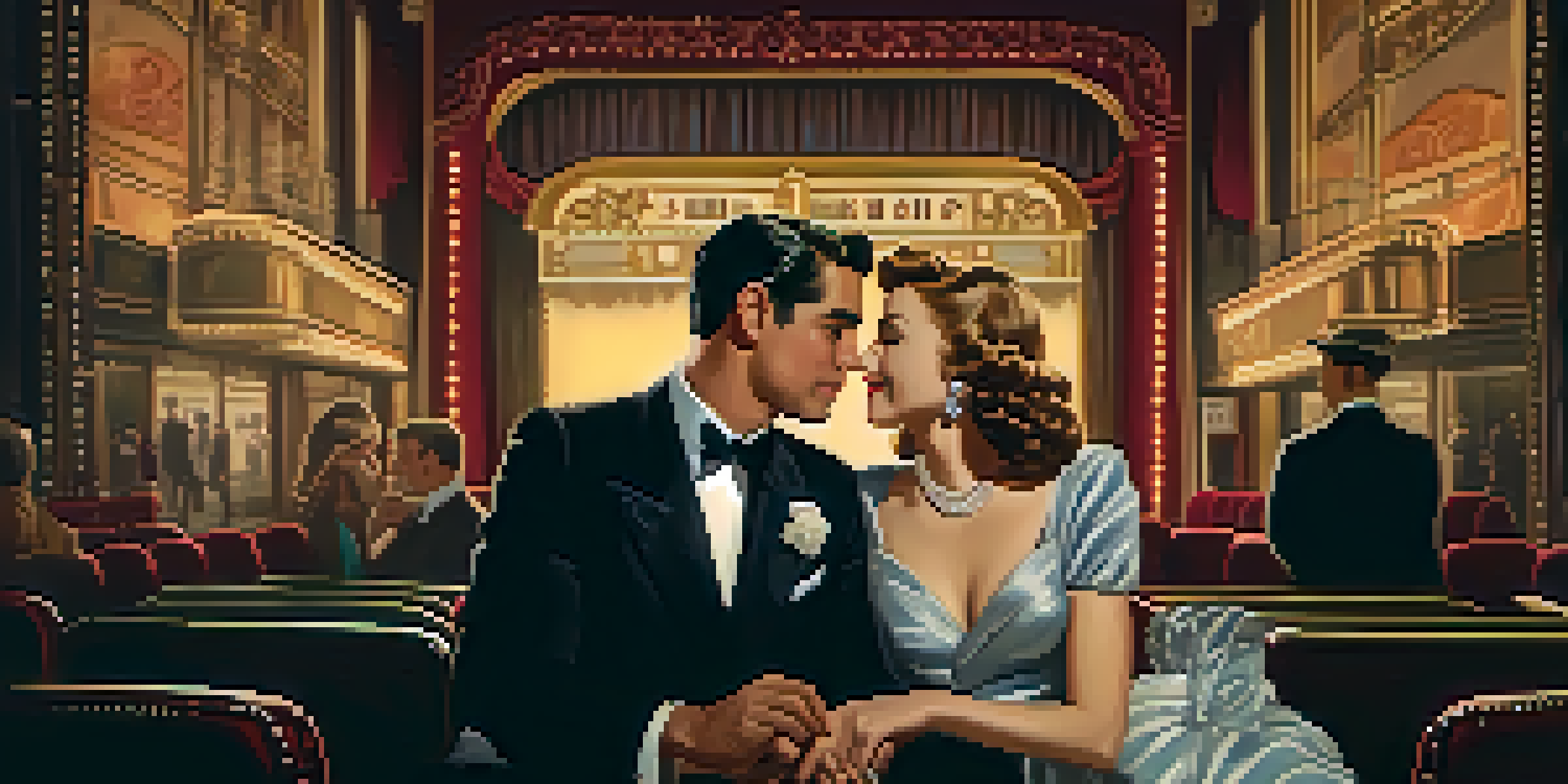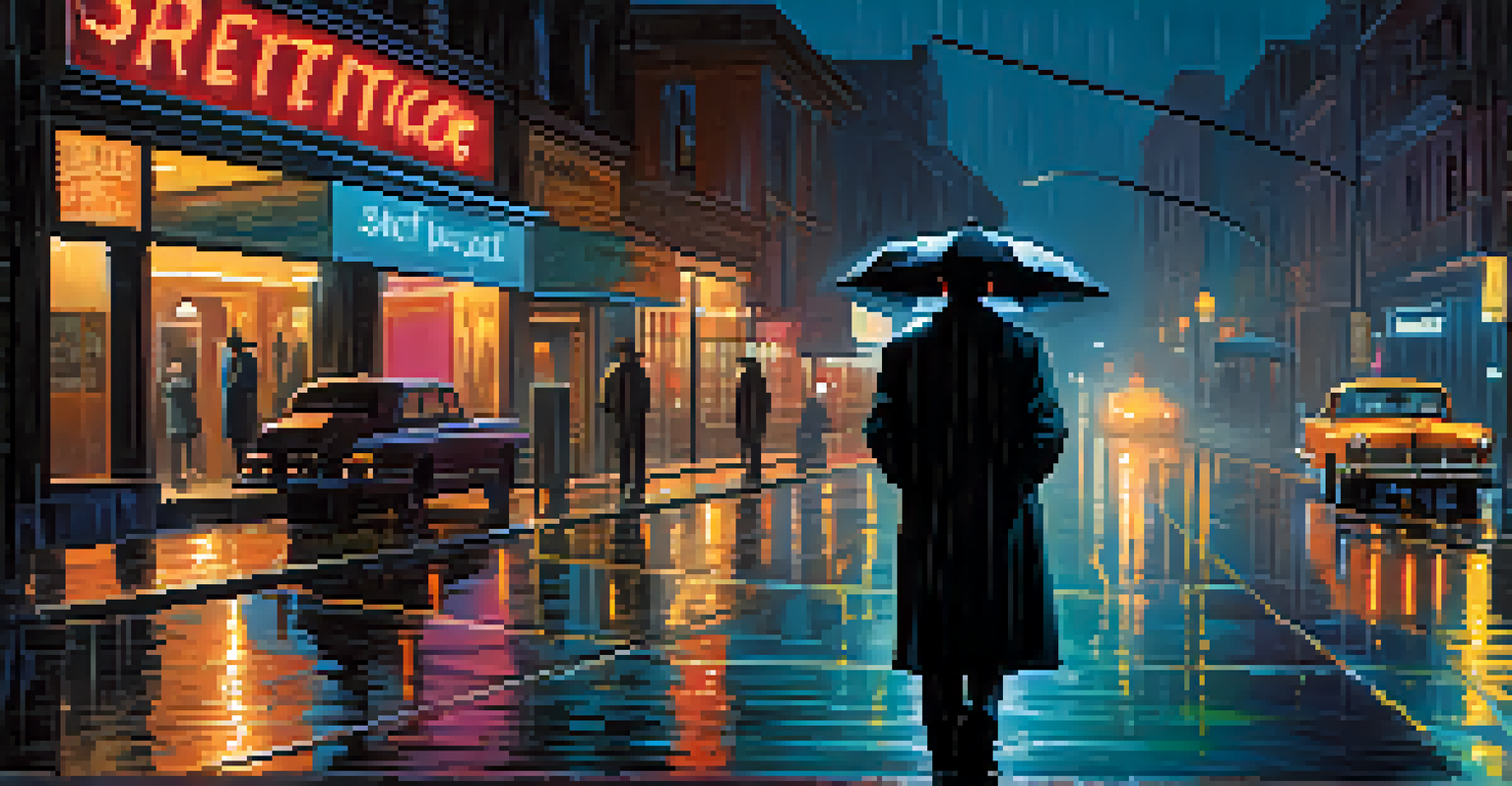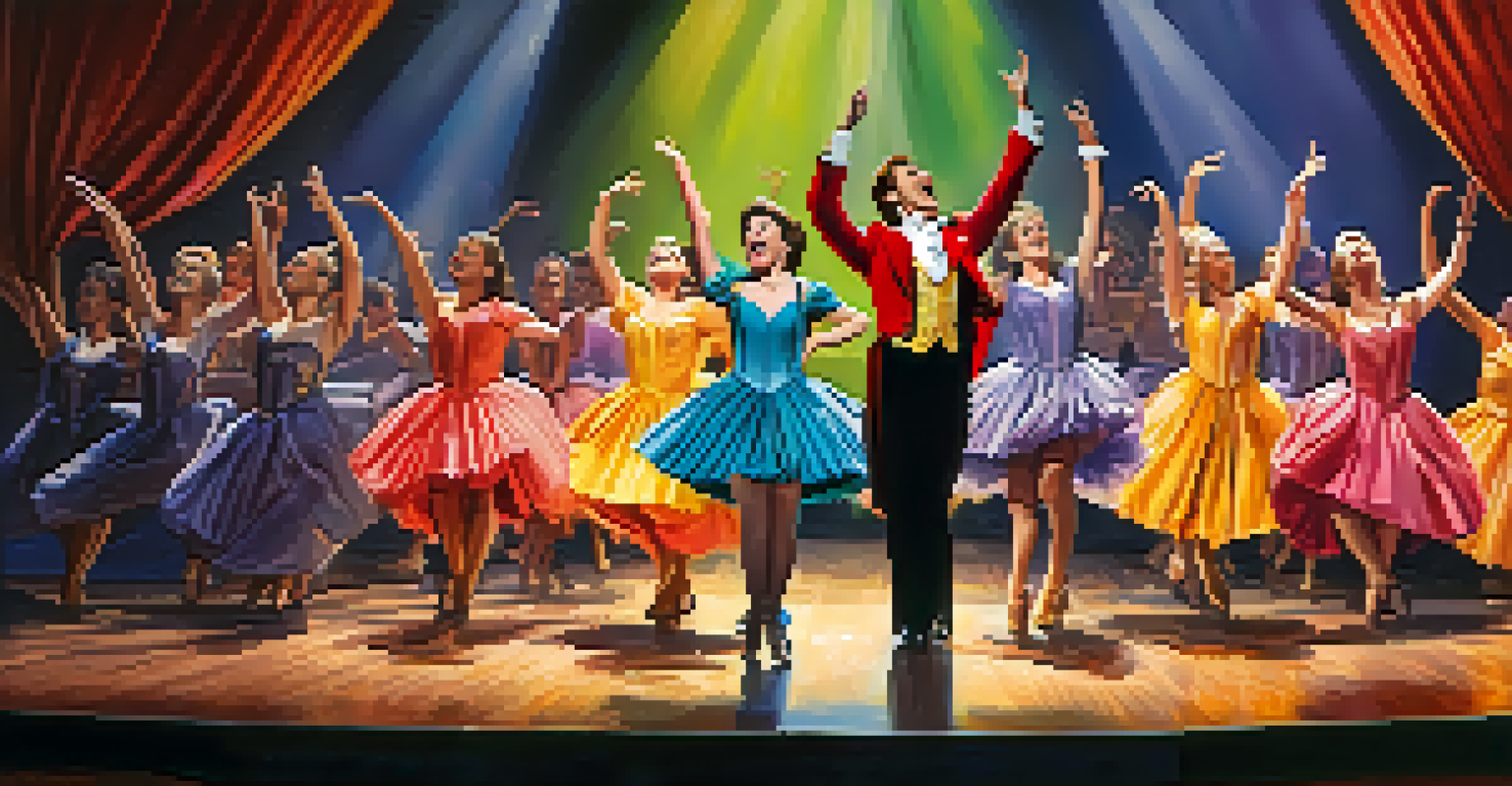How Classic Films Shaped Modern Storytelling Techniques

The Foundations of Narrative Structure in Classic Cinema
Classic films often laid the groundwork for modern narrative structures. Take 'Casablanca' for example; its clear three-act structure has influenced countless screenwriters. The way tension builds and resolves in these films teaches us the importance of pacing in storytelling.
A film is a series of moments that create an emotional landscape for the viewer.
This structured approach allows audiences to follow the plot easily and connect emotionally with characters. By understanding these foundational principles, contemporary filmmakers can create stories that resonate with viewers. Classic cinema shows us that a well-crafted narrative can stand the test of time.
Moreover, these structured narratives provide a blueprint that modern storytellers can adapt to fit new genres and styles. As we draw inspiration from these classics, we can innovate while respecting the storytelling traditions that came before us.
Character Development: Lessons from the Classics
In classic films like 'Gone with the Wind,' character arcs are central to the story's emotional impact. These films often spend significant time developing their characters, making their journeys relatable and engaging. This emphasis on character depth is something modern filmmakers strive to achieve as well.

Audiences today crave authentic characters who evolve over time, a technique perfected by classic storytellers. By presenting flaws and growth, films can create a connection that keeps viewers invested. Take the transformation of Scarlett O'Hara as a prime example of character development that still resonates today.
Narrative Structures Shape Cinema
Classic films provide a foundational blueprint for modern storytelling, emphasizing the importance of structured narratives.
Learning from these classic portrayals, modern writers can create multi-dimensional characters that feel real and relatable. This approach not only enhances the narrative but also fosters a deeper emotional connection with the audience.
Cinematic Techniques: Visual Storytelling from the Classics
Classic films introduced various cinematic techniques that are still in use today. Techniques such as close-ups and establishing shots were masterfully used by directors like Alfred Hitchcock to convey emotion and context. These visual storytelling methods allow filmmakers to communicate complex ideas without relying solely on dialogue.
The story is the most important thing; you can have a beautiful film, but if the story is not there, then it loses its essence.
For example, the use of lighting and shadows in 'Citizen Kane' creates atmosphere and emphasizes the psychological state of characters. Modern filmmakers often draw from these techniques to evoke specific feelings or highlight important plot points. This visual language is vital in making stories more engaging.
By incorporating these classic visual storytelling methods, contemporary filmmakers can create richer narratives that captivate their audiences. This synergy between visual techniques and storytelling is a hallmark of effective cinema that remains relevant today.
Themes and Motifs: Echoes of the Past
Many themes explored in classic films still resonate in modern storytelling. Issues like love, sacrifice, and identity were central to classics like 'The Wizard of Oz,' and they continue to be relevant today. By revisiting these timeless themes, modern filmmakers can tap into universal human experiences.
For instance, the theme of the hero's journey, as seen in 'The Adventures of Robin Hood,' remains a powerful narrative device. Today’s films often mirror this structure, allowing audiences to connect with characters on a deeper level. This connection is what keeps viewers engaged and invested in their stories.
Character Depth Engages Audiences
The character development techniques from classic films create authentic and relatable journeys that resonate with viewers today.
Thus, acknowledging these recurring themes can enhance contemporary storytelling, making it more relatable and impactful. Classic films remind us that while the times may change, the core human experiences often remain the same.
Dialogue: The Wit and Wisdom of Classic Scripts
The dialogue in classic films often sparkles with wit and depth, offering lessons for modern screenwriters. Movies like 'The Philadelphia Story' feature sharp, clever exchanges that keep audiences engaged. This highlights the importance of crafting memorable dialogue that feels authentic and drives the plot.
Classic film dialogue teaches us that every line should serve a purpose, whether it’s to advance the plot or develop character. This discipline helps modern filmmakers create more impactful conversations that resonate with viewers. By studying these scripts, writers can learn how to balance humor and emotion effectively.
Moreover, the art of subtext in dialogue, prevalent in classics, encourages modern writers to communicate deeper meanings without stating them outright. This approach creates layers in storytelling that invite audience interpretation and engagement.
Emotional Resonance: Connecting with Audiences
Classic films excelled at creating emotional resonance, a quality that modern storytelling aims to replicate. Films like 'It's a Wonderful Life' evoke strong feelings, reminding audiences of their own lives and experiences. This ability to connect on an emotional level is a key element in successful storytelling today.
Modern filmmakers often analyze how classic films achieve this connection, using techniques such as music, pacing, and character relatability. By understanding these methods, filmmakers can craft stories that touch hearts and inspire action. Emotional storytelling is not just about the plot; it's about creating experiences.
Timeless Themes in Modern Stories
Many enduring themes from classic cinema continue to influence contemporary films, reflecting universal human experiences.
Thus, drawing from the emotional depth of classic films can enhance modern narratives, making them more compelling. The goal remains the same: to touch the audience's heart and leave a lasting impact.
Influence of Genre: Classic Foundations of Modern Film
Genres like film noir and musicals emerged from classic cinema, shaping how stories are told today. The structure and style of these genres continue to influence modern filmmakers, providing a foundation for new narratives. Films such as 'Singin' in the Rain' set standards for musical storytelling still seen in today’s productions.
Moreover, the conventions established in classic genres are often subverted or innovated upon in modern films. For example, contemporary filmmakers might take the tropes of horror films and twist them to create fresh experiences. This dynamic evolution reflects the ongoing influence of classic cinema on current storytelling.

By embracing and reinterpreting these classic genres, modern creators can engage audiences in new ways while paying homage to the past. The dialogue between classic and contemporary styles enriches the cinematic landscape.